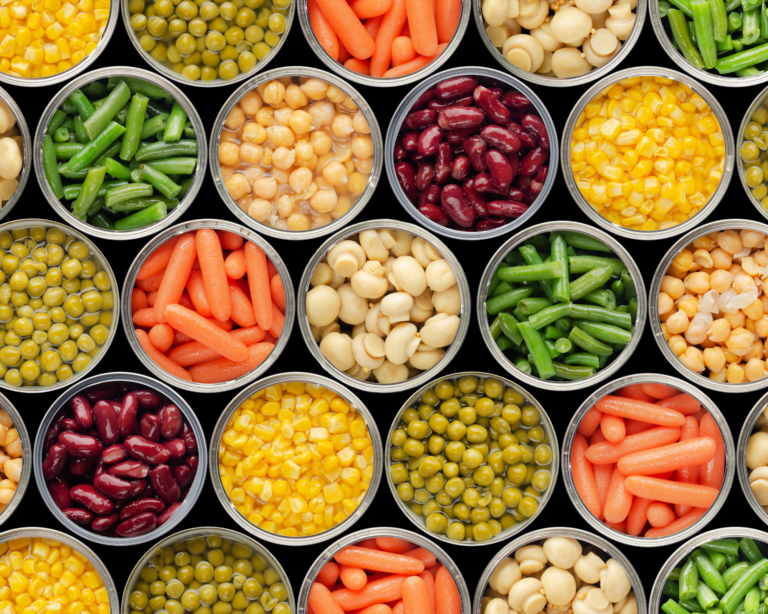Preserved Foods: Canned, Frozen, and Dried
Fresh foods are often seen as our healthiest option, but preserved foods offer similar nutritional benefits while being convenient and cost-effective.

Read Time: 3 minutes
Published:
For many, a stroll down the canned food aisle can bring back memories of childhood meals. Remember that plate of mushy canned peas? Even if it’s been years since we’ve eaten peas, just seeing a can of them can return us to our youth. Yet canned foods in the U.S. often come with a bad reputation. We tend to think of fresh as healthy and preserved as not. But the truth is more nuanced.
Preserved foods—canned, frozen or dried—offer advantages to shoppers: convenience, a long shelf life, and a way to reduce food waste. When preserved foods are made with care for quality, sourcing, and sustainability, and eaten with attention to their nutritional value, ingredients, and environmental impact, they can offer real health benefits.
Canned vegetables can save you up to 20% in cost compared to fresh, and both canned and frozen options pack nearly the same nutritional punch as fresh vegetables. But when it comes to fruit, fresh usually wins with higher nutrient levels than canned.
Despite the cost savings and convenience, preserved foods have their downsides—mainly due to additives like sodium, which can impact blood pressure, contributing to the less-than-stellar reputation of some products.
In food deserts, where access to fresh produce is limited, creative solutions are essential for filling nutritional gaps.
Advances in food processing have reduced the number of additives, making preserved foods healthier and more appealing. As a result, modern technology has led to a wider variety of enticing preserved food options, such as vacuum-packed ready meals, freeze-dried fruits, artisanal canned soups, gourmet pickled vegetables, and smoked or air-dried meats. Mushy peas are becoming a distant memory.
Shahid Arusha Siddiqui and colleagues reviewed studies that highlight the importance of optimizing drying processes to maintain food quality while minimizing degradation and environmental impact. The researchers discovered that modern drying techniques for fresh produce offer the best mix of efficiency and cost, outshining canning, freezing, and other preservation methods. This innovation is helping make healthy eating easier, affordable, and tastier. New preservation techniques further improve the nutritional quality of preserved foods as well as the taste and texture. These innovations make preserved foods a valuable resource for families, school programs, and government nutrition initiatives like SNAP-Ed and EFNEP.
In food deserts, where access to fresh produce is limited, creative solutions are essential for filling nutritional gaps. For low-income families, especially those with limited access to fresh produce, the affordability and extended shelf life of preserved foods are crucial resources in maintaining a balanced diet. Educating the public about strategies to make good use of low-cost preserved food options allows the wider population to eat well and with nutritional value.



